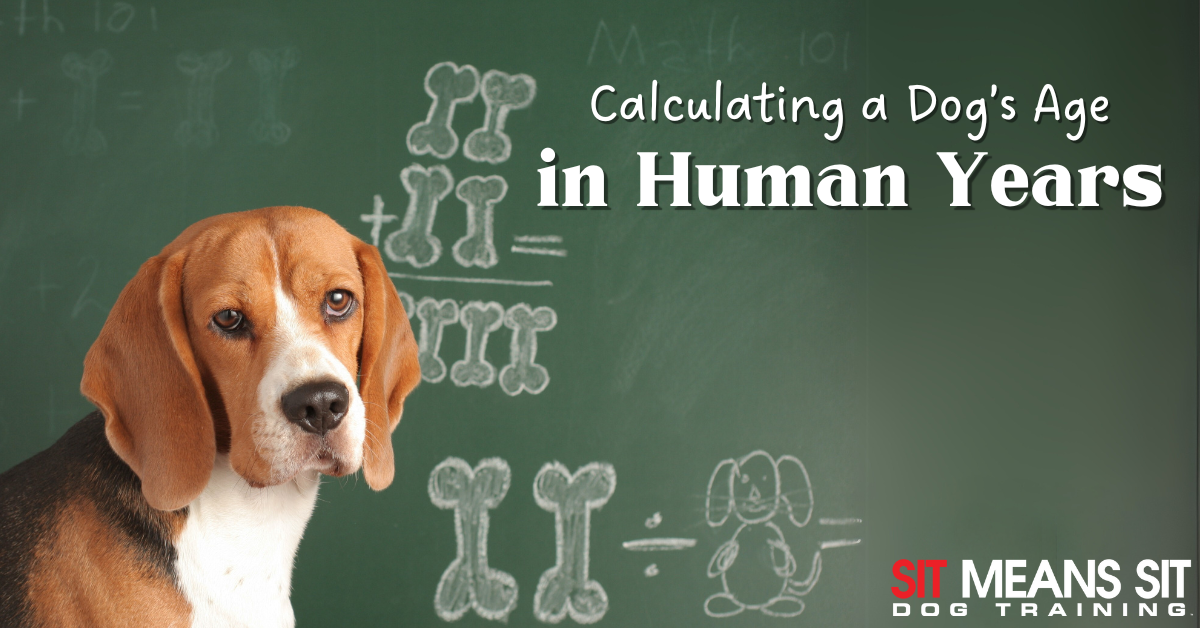
How to Calculate Your Dog’s Age in Human Years
Have you ever looked at your furry friend and wondered what human life stage they’re at? For years, the “one human year = seven dog years” rule has been a widely accepted equation for calculating a dog’s age. However, recent research has shown that this simple formula doesn’t account for the complexity of canine aging. Let’s break down the best way to determine how old your furry friend really is in “human years.”
Why is Understanding Your Pup’s Age Important?
First and foremost, let’s consider why understanding your pup’s age is important. When dog owners have a better understanding of how old their furry friends are, they’ll be able to provide them with better care and support at each stage of their lives. For example, older dogs need more frequent vet visits and may require special attention to their diet, exercise, and joint health. Additionally, if you know your dog is entering their senior years, you may want to plan to put extra care into their daily life and routine. This may include looking into more comfortable bedding, lower-impact exercise, supplements, and potential treatments for age-related conditions.
Is the “1 x 7 Year” Rule Accurate?
You’ve probably heard the classic rule: “One dog year equals seven human years.” While this simple formula is easy to remember, it doesn’t accurately reflect how dogs age. Instead, the aging process in dogs varies based on factors like breed, size, and overall health. Additionally, dogs age at different rates depending on their stage of life. For instance, a puppy’s first year is full of rapid growth, making it equivalent to much more than just seven human years. Similarly, a dog’s aging process slows down as they get older.
How Do I Calculate My Fido’s Age in Human Years?
So, what is the most accurate way to calculate Fido’s age in human years? Well, researchers in the School of Medicine at the University of California – San Diego studied how human and canine DNA change over time. From their research, they came up with a formula to calculate dogs’ age in human years. It involves multiplying the natural logarithm of a dog’s age by 16, then adding 31. This formula is relatively complex, so it’s not the most convenient tool for dog owners to use. However, there are ways to calculate Fido’s age while using a bit less math.
According to the American Veterinary Medical Association (AVMA), the first year of a medium-sized dog is equvilant to roughly 15 human years. The second year of a canine’s life equals about nine human years, and each following year equals about five. However, don’t forget to account for your dog’s breed and size. The American Kennel Club’s chart for calculating your pup’s age breaks dogs down into four size groups: small, medium, large, and giant. You’ll have to modify your equation based on your pup’s size to accurately calculate their age.
How Does a Dog’s Size Affect How They Age?
An important factor in canine aging is size, since larger breeds age faster than smaller ones. For example, a Great Dane reaches senior status much earlier than a Chihuahua. While large dogs typically have lifespans of 7 to 12 years, small dogs might live to be 15 or even 20 years old. If your furry friend is on the larger side, you should keep an eye out for signs of aging once they’re around five or six years old. In comparison, owners of small dogs likely won’t notice signs of aging until their pup is about seven or eight.
Common Signs of Aging in Dogs
As dogs grow older, they often go through a number of physical and behavioral changes that signal they are entering their senior years. Some signs of aging are subtle and can be easily missed, while others are more noticeable. Common signs of aging in dogs include graying hair, poor eyesight, stiff muscles and joints, and difficulty hearing.
As canines reach their golden years, they may also exhibit behavioral changes such as increased anxiety, confusion, and irritability. Dog owners may also notice their pups engaging in less physical activity and having more accidents in the house. Recognizing the signs of canine aging allows you to make adjustments in their routine, which helps your furry friend enjoy their golden years.
If you’re still having trouble calculating your dog’s age after reading this guide, ask your veterinarian at Fido’s next checkup. They can come up with a professional estimation based on your dog’s body shape, fur, eyes, and teeth. With the right knowledge and support, you can help your dog enjoy a happy and comfortable life, no matter their age. After all, your furry friend deserves the very best at every stage of their life!
